Everyone likes to rank the 10 best of something. People were making Top 10 lists well before David Letterman brought it to late night television. But ranking the Bottom 10 can be just as useful and important sometimes. Like when determining which American national parks you should go to and which ones you should skip. Here we will rank the 10 worst national parks in the United States.
Ranking Criteria
So what contributes to making the list of “worst” national parks? “Worst” is a subjective term. But we have tried to be as objective as possible in coming up with these rankings.
The rankings are solely based on the criteria that the United States Department of the Interior – who operates the National Park Service – has set out for inclusion in the National Park system. You can read the full criteria here directly from NPS.
The simple explanation from the document is as follows:
“To be eligible for favorable consideration as a unit of the National Park System, an area must possess nationally significant natural, cultural, or recreational resources; be a suitable and feasible addition to the system; and require direct NPS management instead of protection by some other governmental agency.”
Basically, it has to be uniquely beautiful, culturally or historically significant, and/or have exceptional recreational opportunities. All while having justification for federal protection beyond what a state or local government can provide.
National Parks – a Step Above the Rest
The National Park System includes national monuments, national battlefields, national historic parks, and many other designations. But there are only 63 national parks.
It takes an act of Congress to certify a national park, the most recent being New River Gorge in West Virginia. The national parks are the best of the best. The top tier of our federally protected places. Areas with great significance to our nation and of outstanding natural beauty.
Unfortunately, however, not every national park lives up to this high bar. As we will see, politics often (sadly) plays a major role in the designation of a national park. As you read through this remember that a congressman had a hand in pushing all these places to national park status.
So, in summary, this list focuses on natural beauty, cultural significance, and recreational opportunities. The rankings have absolutely nothing to do with accessibility to the park and services within the park.
Some of the Alaskan parks like Gates of the Arctic are difficult to get to, but truly natural wonders and shouldn’t even have their names uttered in discussions of the worst national parks. Though you will find these parks high on other lists online. Ignore that!
My Credentials
I’ve been to 50 of the 63 national parks in the United States. On this list the only ones I haven’t seen first hand are Isle Royale, Voyageurs, and Indiana Sand Dunes. I’m ok with that too. While I might stop by Indiana Sand Dunes if I’m driving to Chicago, Isle Royale and Voyageurs take significant time and effort to get to. And honestly, if I’m gonna go through that sort of effort to get somewhere I’d rather go back to Norway or Iceland.
I’ve also ranked the most overrated and most underrated national parks in the US. Keep in mind that the list of overrated parks is completely different than this list. Many of the parks on this list do not have much hype around them. The overrated list is all about hype and expectations versus delivery.
This list is all about an objective look at the parks themselves according to the National Park Service’s own criteria. So let’s stop the small talk and get down to it! Here is the definitive list of the Top 10 Worst National Parks in the United States.
10. Wind Cave
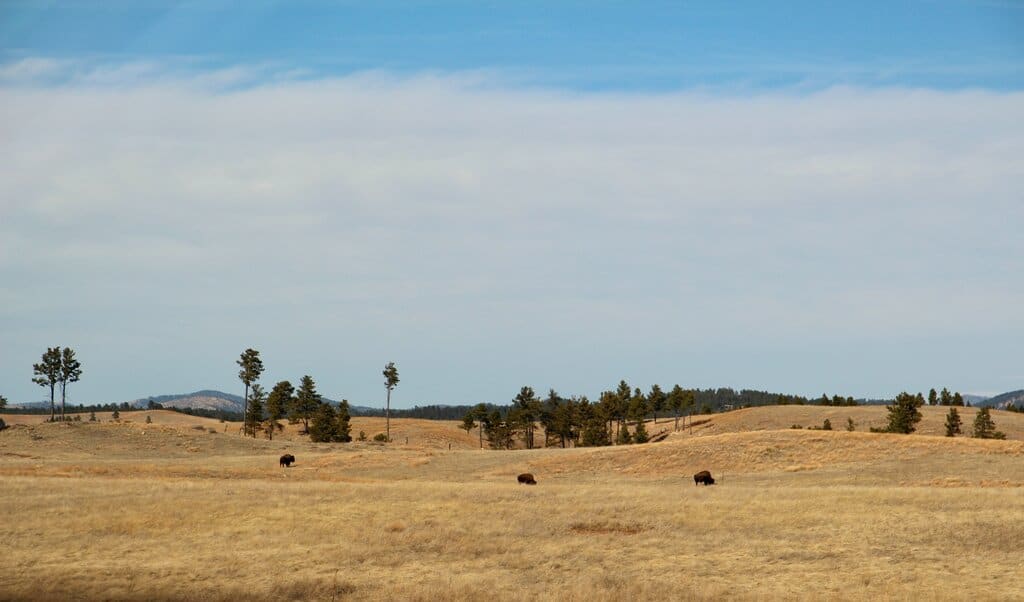
Year it became a national park: 1903
Average annual visitors: 450,000
Overview
Wind Cave National Park protects the 7th longest cave system in the world, as well as an undisturbed prairie of rolling grasslands. Founded during the Teddy Roosevelt era, it was the sixth national park in the US. Above the ground in Wind Cave you’ll find bison, prairie dogs, beavers, and many other American prairie species.
The thing is, while the cave is certainly beautiful, caves are always tough to stand out, as once you’re inside they all look pretty similar. And unfortunately for Wind Cave, above ground is mostly flat and just endless grassland. While the grassland is important for the native species that rely on it, few would argue that it possesses significant natural beauty.
Wind Cave is just outside the Black Hills region of South Dakota, which is known for small – but striking – granite mountains. You know Mount Rushmore, right?
So there is actually a lot to do in the region, and it’s worth a stop to check out the cave if you have time. If you’re short on time though, there are many other more beautiful places to stop in this part of South Dakota.
Wind Cave would be better suited as a National Monument. It has some historical significance, and does protect some biodiversity, but its lack of outstanding natural beauty earns it a spot on this list.
Where to go instead: Custer State Park, South Dakota
Near Wind Cave you’ll find Custer State Park. Custer is similar in terms of wildlife, but offers far more in terms of natural beauty. With impressive granite rock formations, it’s a great place to watch a herd of buffalo move across the Black Hills.
9. Isle Royale
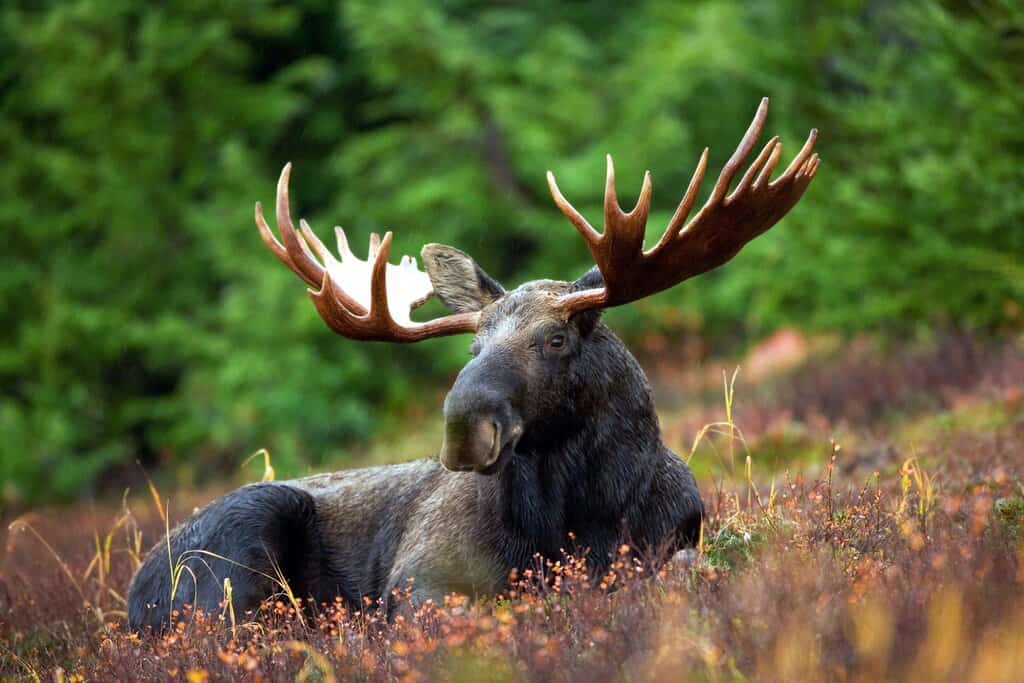
Year it became a national park: 1940
Average annual visitors: 25,000
Overview
With only about 25,000 visitors a year, Isle Royale National Park is one the least visited national parks. This is due to the combination of it being remote and tough to get to and not really having any unique natural beauty.
The park is in the middle of Lake Superior. It’s in Michigan, but closer to mainland Minnesota and Canada. Getting there is not easy. You have to take a plane or ferry from Michigan’s Upper Peninsula.
Once you’re there, you’re greeted with over 200 square miles of forested wilderness. Moose and wolf roam the island, and it truly is a pristine wilderness. No one lives there and it serves a solely recreational purpose for us humans.
But while moose and wolf are cool, the island itself is almost completely flat and covered in dense forest. There is not much in the way of views. Some of the coastline is rugged and rocky, and it has its own beauty, for sure. But it’s not much more than a nature walk once you get going.
For all the effort it takes to get there, it just doesn’t deliver in terms of significant natural beauty or unique historical significance. So Isle Royale finds itself on our list of worst national parks.
Where to go instead: Pictured Rocks National Lakeshore
Michigan has more beautiful coastal areas than Isle Royale and those can be found in Pictured Rocks National Lakeshore. The park is also on the Upper Peninsula but it’s a bit easier to get to.
8. Shenandoah
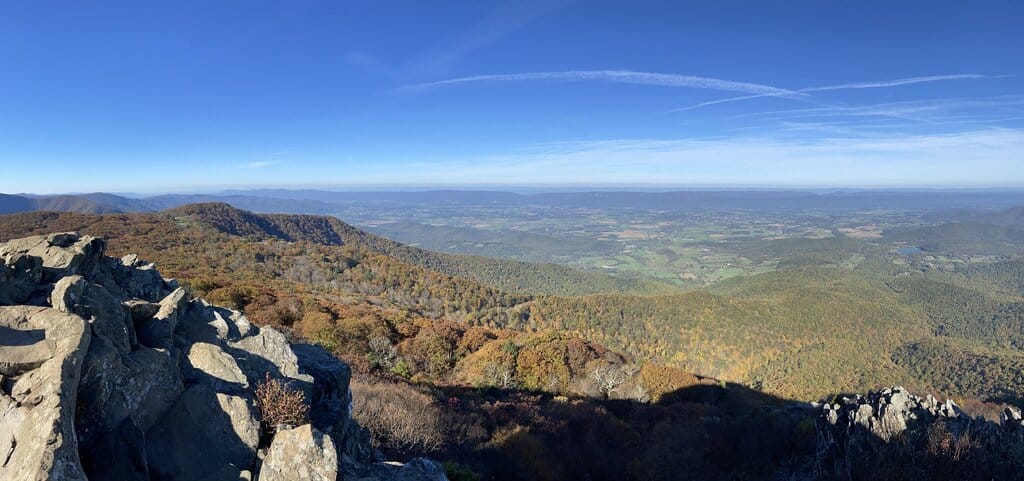
Year it became a national park: 1935
Average annual visitors: 1.7 million
Overview
Shenandoah National Park is located in the Blue Ridge Mountains in Virginia. Being from (and currently living) in Washington DC, I’ve been here numerous times, as it’s roughly 90 minutes outside of central DC.
The fall foliage is beautiful in October and there are black bears scurrying around here and there. Skyline Drive winds through the park for a hundred miles or so, then continues on down to North Carolina along the same ridge. But the park is not much more than just rolling hills covered in forest.
It was established nearly 100 years ago to protect the “extraordinary” natural beauty of the area, by people who clearly hadn’t been west of the Appalachians. I mean, going out west in those days took quite a while. It’s understandable. But these days, anyone who has seen big mountains will be pretty underwhelmed by Shenandoah. This is not Rocky Mountain National Park by any stretch of the imagination.
The main issue with Shenandoah, however, is overcrowding. Being so close to a major metro area with about 6 million residents really puts a lot of stress on a park that is basically just one road. Weekends are a shit-show. Pardon my French. Weekdays are better but can still be terribly busy.
There is really nowhere to go in the park to find some solitude. Want to do one of the bigger hikes in the park? Better get there at 6 AM to get a parking spot. Even then, prepare to just walk uphill through a forest until you get a slight clearing at the top. If you’ve chosen the right trail, that is.
Many of the mountaintops are so densely forested that your only view will be endless trees. At least you’ll get a good workout though, as the trails can be pretty steep!
So sadly for this Virginia born and bred national park geek, Shenandoah earns a spot on the worst national parks list. It just doesn’t possess the qualities the Department of the Interior is looking for in national parks.
Sure, there are recreation opportunities. But they are no better than the other hundreds of trails across western Virginia and the Blue Ridge range. If you’re driving south from DC towards Tennessee, it’s worth a short detour to follow Skyline Drive. But I wouldn’t go planning a trip to Virginia just to see Shenandoah!
Where to go instead: Seneca Rocks, WV
Seneca Rocks is a hiking area a bit west of Shenandoah, across the state border in West Virginia. Unlike most east coast mountains, you can actually see the rocky mountainside here. It’s so steep that it’s not totally covered in trees like other east coast mountains. An easy hike takes you to the top for nice views of West Virginia.
7. Voyageurs
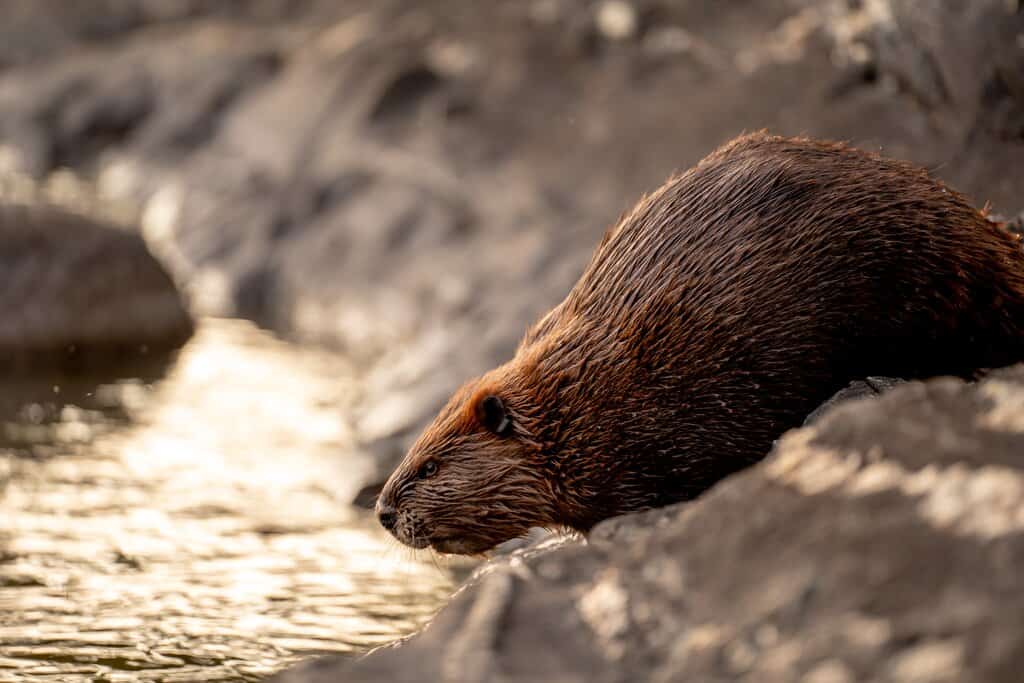
Year it became a national park: 1975
Average annual visitors: 230,000
Overview
Voyageurs National Park is another national park near the Canadian border that is almost completely flat and covered in dense forest. About 275 miles north of Minneapolis, the park is a popular getaway for Minnesotans and features tons of little islands only accessible by boat.
Getting to Voyageurs is not too difficult (just a long drive), as there are tons of boat tours and ferry options from the various lodges along the lake. If you’re not into fishing, though, there isn’t a whole lot to do in the park other than walk along the coast and through the woods.
There are wolf, moose, and other mammals that roam the park, but sightings are not as common as in Isle Royale. Sea life is a little more pronounced, as fishing is a major activity in the park.
Perhaps the park is most known, however, for being the best place in the Lower 48 States to see the northern lights. But don’t go canceling that trip to Finland just yet. While it’s the best place in the Lower 48 to see the aurora, it’s still not a frequent occurrence. And do you know how cold Minnesota winters are!?
When all comes down to it, the park is just some coastline along a lake in Minnesota with a bunch of islands. It hardly fits the criteria laid out by the Department of the Interior for national park status.
Where to go instead: Badlands National Park
If you’re gonna make the 4.5 hour drive from Minneapolis to Voyageurs, you might as well just head the other direction and drive a few additional hours to Badlands National Park in South Dakota. Teeming with bison and colorful formations of dried earth, Badlands is a great place to spend a day in the sun.
6. Biscayne
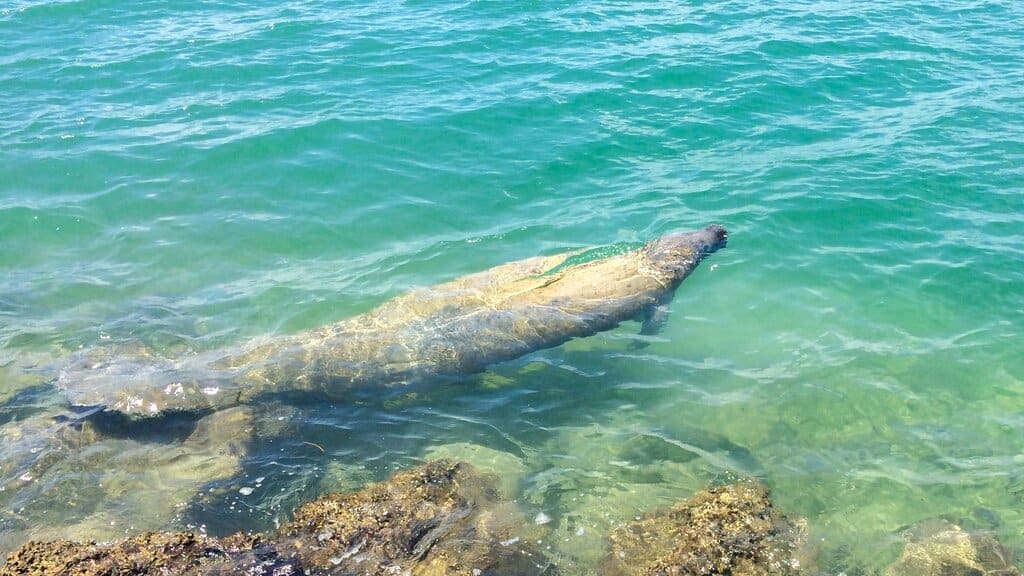
Year it became a national park: 1980
Average annual visitors: 470,000
Overview
Biscayne National Park is unlike the other national parks on this list in that it’s almost entirely underwater. The park was formed to protect marine biodiversity, fragile coral reefs, and pristine mangrove forests. Wildlife in the park waters include endangered turtles, manatees, and hundreds of fish and shellfish.
Biscayne is the furthest north of the Florida Keys. Just South of Miami, it’s actually pretty easy to get to the main visitors center, which is located on the mainland, across the bay from Key Biscayne.
The problem with Biscayne National Park is just that there isn’t a whole lot to do. You can take a boat tour, go kayaking, or maybe try your hand at some fishing. That’s about it. There is a campsite on the island, but camping in south Florida’s heat and humidity? No thanks.
The boat tours often get canceled too. I was supposed to do a glass-bottom boat tour, which I was actually quite excited about. But it got canceled because it didn’t get the minimum number of guests. So a free kayak rental was my consolation prize. I saw no wildlife from the kayak, as you might imagine.
Biscayne National Park is okay. It’s not the Great Barrier Reef or Turks and Caicos. But it’s okay. If you’re ever in Miami it might be worth stopping by if you have time to learn about life underwater in Key Biscayne.
In the end, Biscayne is another national park that was better suited to keep its National Monument status and forgo any promotion from there.
Where to go instead: Everglades National Park
South Florida is also home to the Everglades. While I do consider Everglades National Park to be overrated, it’s still a cool place to see. There are alligators literally everywhere and just outside the park boundary you can take a fan boat ride through the swamp and feed some gators. It’s pretty unique.
5. Hot Springs

Year it became a national park: 1921
Average annual visitors: 1.5 million
Overview
Hot Springs National Park is a heavily visited national park, thanks to its location in the southeastern part of the country. But one visit here after visiting some of the parks out west will leave you wondering why on earth this is a national park.
Hot Springs is little more than a few wooded hills with hot water natural springs. The main attraction is actually the old bath houses in the small town of Hot Springs (which is within the park boundary). One could argue that the bath houses possess great historical significance. But seeing as you literally just learned about them now, how significant can they be?
There are definitely some recreational opportunities in the park. And there are little mountains to hike on. But they’re covered in dense forest so good luck getting epic views. It’s the second smallest national park (after Gateway Arch) and doesn’t have a whole lot going for it outside the park boundaries either. Though the actual town of Hot Spring, Arkansas is not bad. It’s a cute little town with a good German restaurant.
If you’re driving across I-30 and you have a lot of spare time, it’s worth taking the detour to check out Hot Springs. But if not, you’re better served spending your time elsewhere.
Where to go instead: New Orleans
There’s not a whole lot of great stuff within a day’s drive of Hot Spring, Arkansas. So why not drive all the way down to New Orleans, Louisiana? You can go gator chasing on a swamp tour or explore the historic French Quarter, not to mention getting some amazing seafood. Have you had gumbo?
4. Cuyahoga Valley
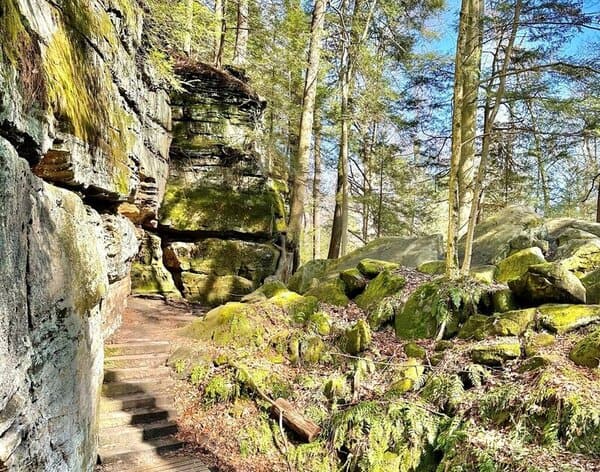
Year it became a national park: 2000
Average annual visitors: 2.8 million
Overview
Most people not privy to the ins and outs of the National Park Service are completely unaware that there is a national park in Ohio, tucked between Akron and Cleveland. But Cuyahoga Valley National Park has actually been a national park since 2000, after being first designated as a National Recreation Area in 1974.
The park is home to a few waterfalls, some hiking trails through the woods, and some old buildings. The word “valley” implies there are mountains. But we are in Ohio after all. There are no mountains, but there are some big hills and rocky cliffs.
While Cuyahoga Valley is a great escape from the urban jungles of Akron and Cleveland, it possesses “no qualities that qualify it for inclusion in the National Park System”. Those are actually the exact words the Department of the Interior used in a 1974 letter urging congress not to designate Cuyahoga Valley a National Recreation Area. Ouch!
And those words were just when it was proposed to be a national recreation area. Little is known about its promotion to National Park status, but it’s safe to assume the Department of the Interior was not amused when it was approved by Congress.
If you find yourself in northern Ohio it’s nice to stop by the park and check out Brandywine Falls or walk the Ledges Trail. But again, a special trip to Ohio to see Cuyahoga Valley will, sadly, leave you extremely disappointed.
Where to go instead: Cedar Point, Sandusky, Ohio
Cedar Point is perhaps the most impressive theme park in the world when it comes to roller coasters. You’ll find 16 roller coasters in the park, including some of the tallest and fastest coasters in the world.
3. Indiana Sand Dunes

Year it became a national park: 2019
Average annual visitors: 2.3 million
Overview
One of the most recent national parks to be elevated to that level is Indiana Sand Dunes National Park. Only about an hour from central Chicago, it’s heavily trafficked due to its location in a suburban environment.
But what is Indiana Sand Dunes exactly? Well, it’s just some lakeside sand dunes on Lake Michigan that don’t possess any unique or distinguishing features.
The US has two other parks built around sand dunes. Great Sand Dunes National Park in Colorado protects the tallest sand dunes in North America. And White Sands National Park in New Mexico protects the only white sand dunes on the continent, surrounded by stunning mountains on all sides. These parks are unique and spectacular. Unfortunately. Indiana Sand Dunes is not.
Indiana Sand Dunes is a national park – again – because of politics. In fact, the Department of the Interior “strongly” opposed the proposal to elevate it from a National Lakeshore to a National Park. But so is the system. The managing agency doesn’t even get a vote!
If you do make it to Indiana Sand Dunes you’ll find some rolling hills of mostly vegetation-covered shallow sand dunes. There are some hiking trails, and you can hang out on the beach. But that’s really about it. You’ll probably leave agreeing with the Department of the Interior’s initial assessment that this should not be a national park.
It’s worth a stop if you’re driving to or from Chicago. But no one in their right mind will tell you to make a special trip just to go to Indiana Sand Dunes National Park.
Where to go instead: Holland, Michigan
Why not just continue up the coast of Lake Michigan until you get to Holland, a town named after, and modeled after – you guessed it – the Netherlands. It’s like a miniature Dutch city, complete with windmills and tulips.
2. Congaree
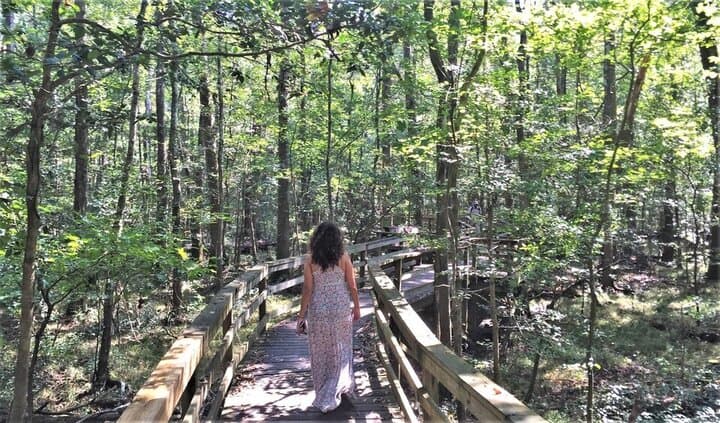
Year it became a national park: 2003
Average annual visitors: 146,000
Overview
Ask anyone from Columbia, South Carolina if they’ve been to Congaree National Park and they’ll properly give the same answer: “Why would I go to Congaree?” The park is not even 20 miles east of downtown Columbia, yet most of the city’s residents have never even been! Odd, huh?
Well, let’s take a deeper dive into this. Congaree National Park is one of the smallest national parks and protects some ancient pristine lowland swamp in the oldest hardwood forest in the country. Much of the Southeast used to be covered in this hardwood forest, but over the years the trees were harvested for lumber. Congaree is what remains.
The park is basically a short boardwalk trail through the swamp and a winding river for kayaking or boating. That’s really it. There’s literally nothing else to do in the park, other than learn about the swamp at the visitors center.
Congaree was designated as a National Monument in 1976 and really should have stayed that way. It was promoted to National Park in 2003. Information around the promotion is murky at best (see what I did there 😉), and the Department of the Interior hasn’t published any documentation around it.
While the park does serve a vital role in protecting the ancient forest and conserving an extremely biodiverse area with thousands of flora and fauna species, it offers almost no recreational opportunities and little in the way of immense natural beauty.
For these reasons, Congaree gets the coveted #2 spot on the Top 10 Worst National Parks rankings. I’m sure the lovely residents of Columbia, South Carolina will agree!
Where to go instead: Charleston
Two hours from Congaree, at the Atlantic coast is the historic city of Charleston. Instead of walking around a murky swamp looking at trees, walk the old city and take in that southern charm. Whether you’re a city person or not, everyone loves Charleston.
1. Gateway Arch
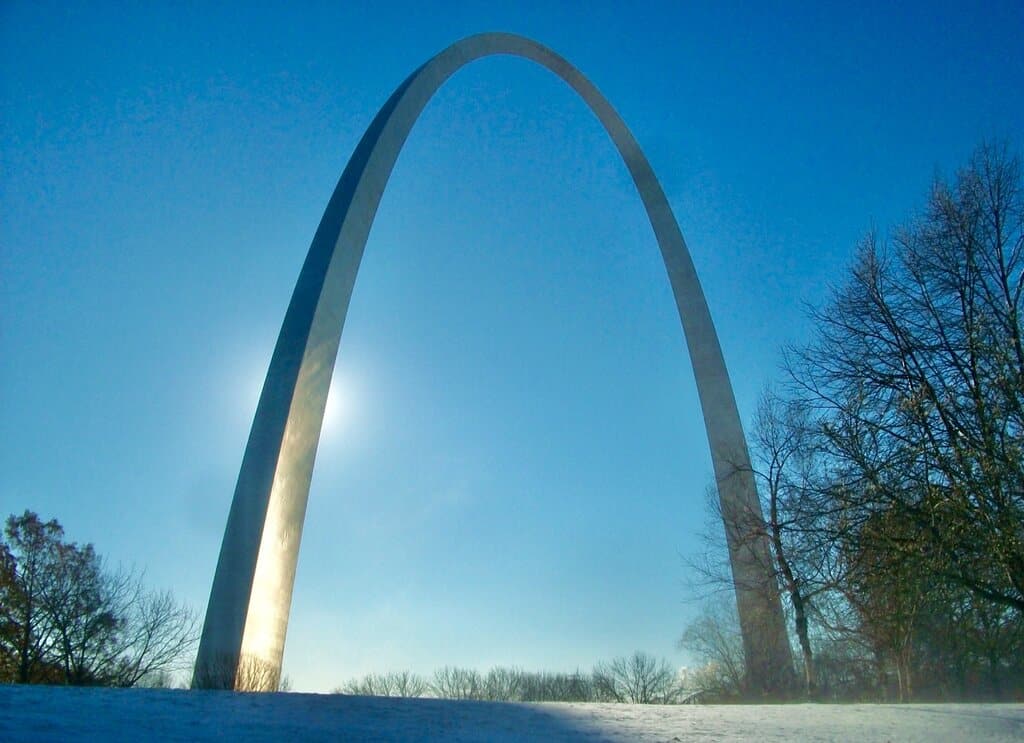
Year it became a national park: 2018
Average annual visitors: 2 million
Overview
At last we arrive to the #1 spot on the worst national parks list. Gateway Arch National Park is one of the newest national parks. When it became a national park in 2018 it left many heads scratching. It has long been a national monument – where it rightfully belongs – but you remember what I said about politics, right?
The park is in central St. Louis, Missouri and it is literally just a grassy area with a giant steel arch that was built from 1963-1965. The arch commemorates the Lewis and Clarke expedition in 1804 that set out to discover the recently purchased western United States.
The Department of the Interior opposed the 2017 bill in Congress – that was co-sponsored by both Missouri senators – stating that it belonged in the National Monument category. They cited Statue of Liberty National Monument as a comparison, noting that national parks are typically big and protect pristine environments. Congress didn’t care and approved the promotion to National Park anyways. Thus the smallest national park in the country was born.
There is an argument to be made that Gateway Arch holds historical significance. But the arch has literally nothing to do with the Lewis and Clarke expedition or the Louisiana Purchase. Nothing historical happened after the arch was built.
In terms of natural beauty, we’re talking downtown St. Louis here. It’s not exactly Yosemite. You can go up to the top of the arch and get a great view of one of the least interesting cities in the United States. Sorry, St. Louis friends, but I’m sure you agree 🙂
Gateway Arch National Park should be a national monument and not a national park, and it’s hard to find someone who does not agree with that assessment. For this, it gets the top spot on our Top 10 Worst National Parks list.
Where to go instead: literally anywhere else
The Anheuser Busch brewery, maybe?
Worst National Parks – Final Word
Hopefully you found these rankings useful. The places listed aren’t necessarily bad. They’re just not worthy of the coveted national park status. Some might still be worth a visit, and you’ll probably have a great time. Just don’t go in expecting Grand Canyon views!

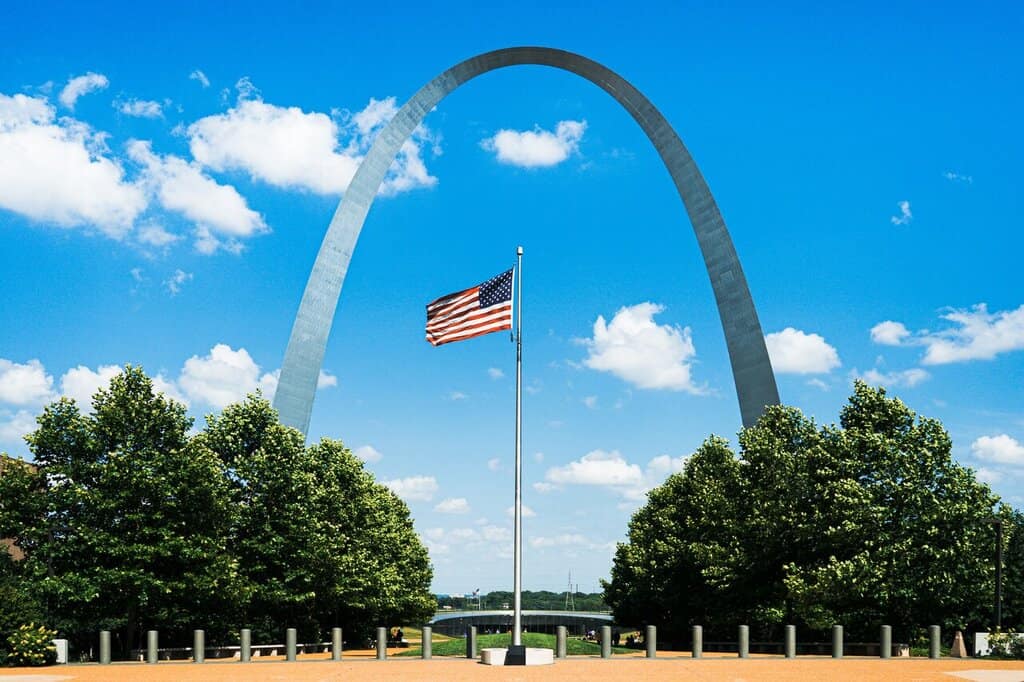
10 comments
HI Chris
Shenandoah isn’t just a drive-through attraction; it’s a freaking masterpiece. Picture this: the Blue Ridge Mountains cradle this gem, and the views? Oh, they’re like a symphony for your eyeballs. We’re talking about a place where black bears roam, wildflowers sway, and ancient hemlocks whisper secrets. Wake up, folks! Shenandoah’s ecological diversity is off the charts. If you want solitude, just go on the AT!
We must be thinking of different Shenandoahs 🙂
Clearly you only care about views. Some of us go to the parks to see intact ecosystems. Most of the parks on this list were made to protect ecosystems. Besides, do you want more parks or not?
Hi Bob, I definitely don’t think we need more national parks if they don’t meet the standards. Assuming you read the full article, you would have read the Department of the Interior’s guidelines for national park creation. They themselves opposed the creation of many of these national parks, which are created by an act of congress. Protecting a natural ecosystem does not relate to being derserving of national park status. Key Biscanye could easily be a national monument, a national wetland, or a state park, for example. I think you might have missed the point of the article? If you took these 10 off the list then what would you put on?
You might be right. But in the case of Biscayne they were about to build a superhighway right on top of it! You can forgive those involved for getting caught up in the rush to protect it. If you would like to know about the desperate struggle to save some of these places that you don’t seem to like very much, watch the Ken Burns of the parks. (And I do agree, Hot Springs is garbage)
Don’t get me wrong Bob, I’m all about preserving natural land and ecosystems. The National Park Service manages over 400 different properties. But only 63 of those are National Parks. It’s like a prestige thing. Key Biscayne should absolutely be a National Seashore (like Point Reyes in CA or the many others). It just doesn’t qualify for the national park criteria. As an example of something that does fit the criteria that is not a national park: the Napali Coast in Hawaii. But I don’t think the state of Hawaii is going to give that one up to the feds any time soon!
Shenandoah does not in the slightest deserve to be on this list. Just because you only care about the naked mountains of the west doesn’t mean that we DCer’s don’t deserve a park near us. Besides, if you don’t like the Appalachians, why didn’t you slam the Great Smokies? I also did not appreciate your dig on Shenandoah’s trails. Old Rag is one of the best trails in the country. And if you have to get there early in the morning, than so what? As far as I know, National Parks were made for people to enjoy. I think those massive crowds all disagree with your ratings. As one final thing, Seneca Rocks is just a mountain with a cool rock formation on top. Shenandoah has at least 10 similar mountains.
Hi Blah, thanks for the comment. You’re definitely entitled to your opinion on Shenandoah. I can’t say that I agree though. Having been to almost every national park, Shenandoah is, sadly, a huge disappointment. I’m not a big fan of Great Smokey Mountain either. That got the coveted #1 spot on my Most Overrated Parks list. I’d say it’s more beautiful than Shenandoah overal, but definitely more overrated. Just because I don’t think Shenandoah meets NPS’s national park criteria doesn’t mean you can’t enjoy it though!
You missed one. Frank M. Charles Memorial park, within Gateway National Recreation area in NYC. Has to be the worst by far. Although there are beautiful views of Jamaica Bay it is tainted by neglect, unusable fields, dozens of dead and dying trees, dangerously unkept playground and fencing, hypodermic needles washing up on shore regularly and, I kid you not, the occasional remains of animal sacrifices at the beaches.
I am a local civic minded resident who has tried to work with the NPS for about a decade to no avail.
Yeah there are a lot of NPS properties that are questionable as well. That one isn’t a national park, but a “memorial” park. If it ever becomes a national park that would be a sad state of affairs.